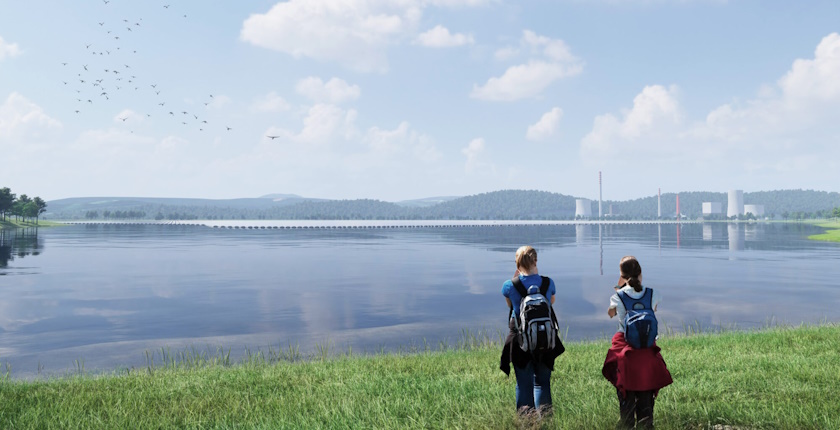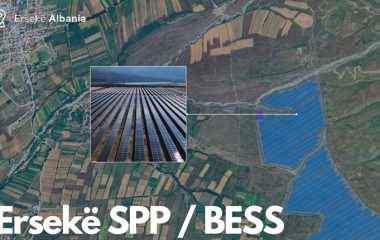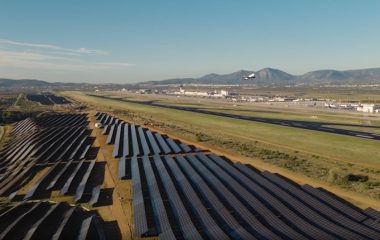
Photo: HSE
Slovenian state-owned energy utility Holding Slovenske elektrarne – HSE said it would cover a part of the Družmirje artificial lake with floating solar panels. The capacity could reach as much as 140 MW. The location is next to the country’s only coal mine and power plant.
In line with the national coal phaseout and just transition strategy, Holding Slovenske elektrarne is working on alternatives for energy supply and investing in the development of Šalek (Šaleška) valley. It hosts the only remaining mine and thermal power plant in Slovenia. HSE said it would install a floating photovoltaic system on the Družmirje lake, also known as Šalek lake.
The water body is artificial. It was formed in the late 20th century as land above parts of the Premogovnik Velenje underground coal mine subsided. HSE’s Termoelektrarna Šoštanj (TEŠ) is also next to the lake.
Investment includes environmental protection
The government-controlled company vowed to preserve the Družmirje lake’s ecosystem including birds and to adapt the entire shore for water and waterfront activities. HSE added that the floating solar power plant would have up to 140 MW in capacity.
It plans to build it 150 to 200 meters from the western shore and up to 400 meters away in the southwestern section. The floating PV plant will take up no more than half of the lake’s surface, HSE pointed out.
An info point will be established for the local population to learn about the project, the utility added. HSE Group reduced carbon dioxide emissions by 1.4 million tons or 30% in the last decade and sulfur dioxide and nitrogen oxide emissions by 75%, the announcement reads.
The national strategy from two years ago envisages a coal phaseout by 2033. The Šalek valley is part of the Savinja and Šalek coal region (Savinjsko-šaleška regija – SAŠA). The other one is Zasavje.
HSE joins group of developers of huge floating solar power projects in Southeastern Europe
Slovenia regulated floating PV plants with last year’s Law on the Introduction of Devices for the Production of Electricity from Renewable Energy Sources.
The subsector is gaining momentum in Europe while in the Balkans there are only a few small facilities so far. On the other hand, projects for floating photovoltaics, popularly called floatovoltaics, are piling up throughout the region. Some could even be measured in hundreds of megawatts and more.
Some biologists and activists are concerned that floating solar power plants would harm aquatic life by depriving it of light and argue that there is no relevant scientific research. They also say PV panels may heat the water too much and leak chemicals. Conversely, proponents of the technology are pointing out that floaters reduce evaporation.

















Be the first one to comment on this article.